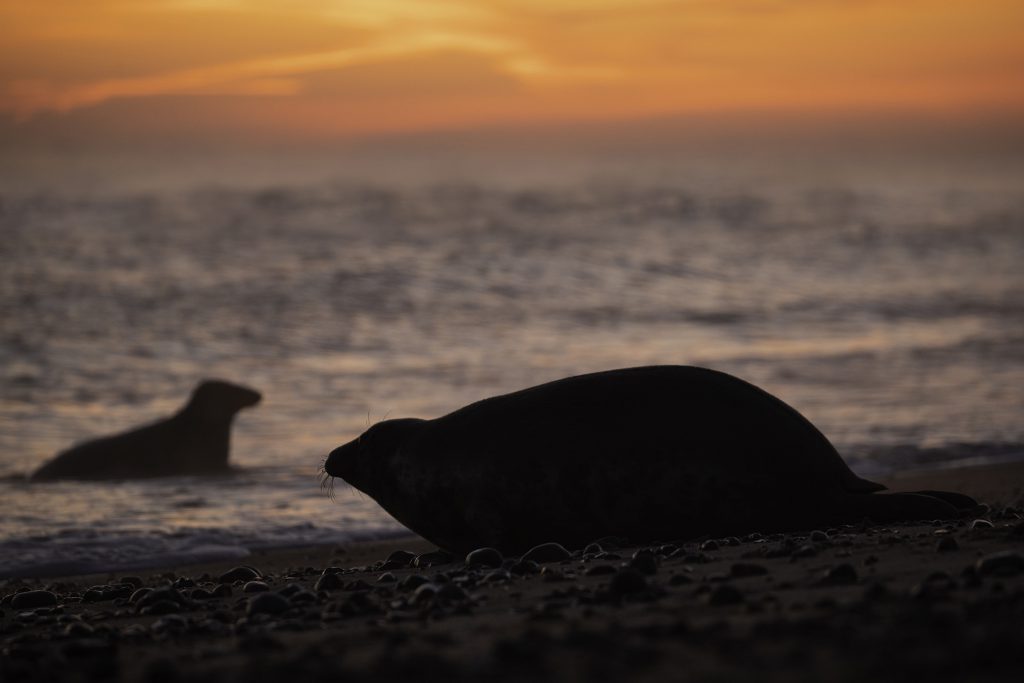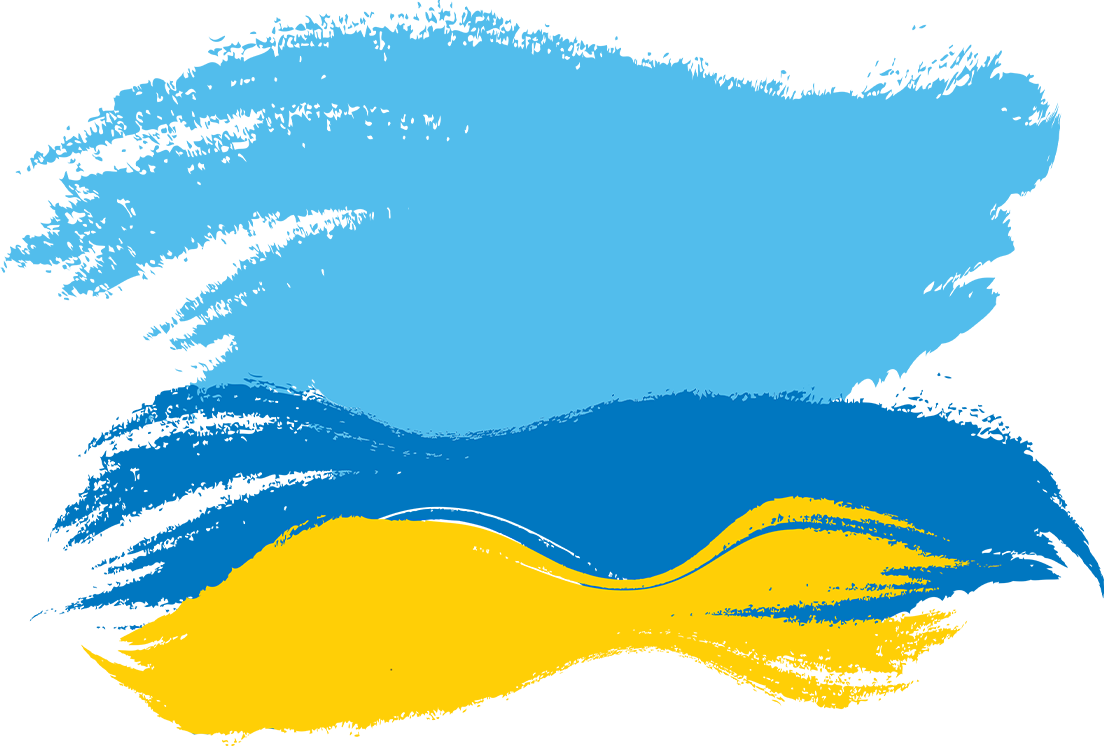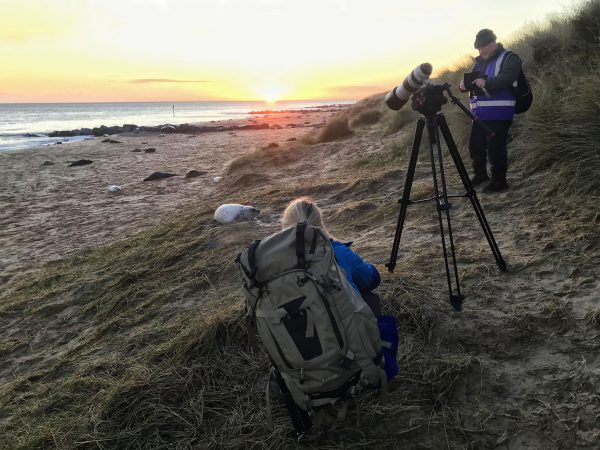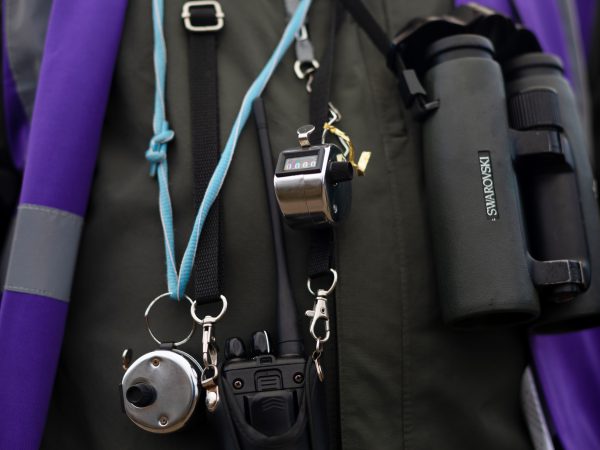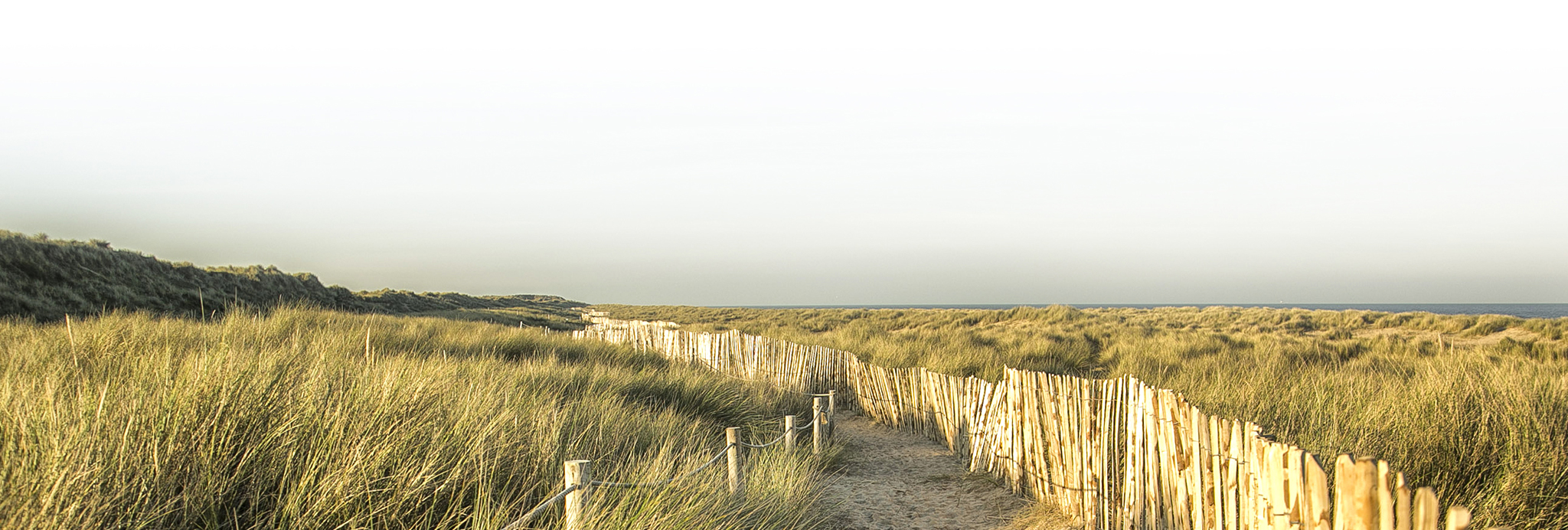
Horsey & Winterton
Thousands haul out at Horsey and Winterton between November and late January to give birth and mate. That is when they are most exposed to humans, who travel from near and far to see them. Our wardens do what they do, simply because there is a need to protect the long-term future of the colony.
Amazing Things You Might Not Know About Grey Seals
- Grey seals are thought to be able to dive to depths of 300m and stay underwater for up to 20 minutes.
- Grey seal milk contains up to 50-60 % fat, ten times more than a Jersey cow’s milk. This helps the pups gain weight rapidly and develop a layer of blubber. Pups go from their birthweight of around 13kg to 45 kg in just three weeks.
- Grey seals can end up in some odd places on their travels. In 2014 a seal was rescued from a farmer’s field more than 20 miles from the sea and a seal treated and tagged by the RSPCA at East Winch and subsequently turned up in Dunkirk.
- Grey seals and other pinnipeds (seals, sea lions and walruses) use highly sensitive whiskers known as mystacial vibrissae to detect fish-generated water movements when hunting in murky water with poor visibility or dark conditions.
- Adult grey seals typically have a wedge-shaped head and characteristically long nose with wide nostrils which run parallel and vertically down the nose. The species scientific name for grey seal (Halichoerus grypus) translating to ‘hooked-nosed pig of sea’.
- Pups are born with a white coat known as a “lanugo”. They moult this after they are weaned, around 3 weeks after they are born. The process of growing a shorter adult waterproof coat takes another 3 weeks or so.
- Approximately 40% of the world’s grey seals breed in the UK. In the winter of 2020/21 season 2,500 pups were born at Horsey and Winterton.
- Grey seals typically return to breed and moult to one particular location and female grey seals often return to have their pups at the colony where they were born.
- Female grey seals only suckle pups for 17 to 23 days and then their job is done. She leaves never to return. Pups then stay behind on the beach alone for around another three weeks to moult their white coats and grow a grey waterproof one. They fast during this time living off their fat.
- When they are ready the pups go into the sea and teach themselves to fish.
- Male Seals are called bulls, female Seals are cows and baby seals pups.
- Bulls live for up to 25 years and reach sexual maturity at 6 years. Cows live for 35 years and start to breed at between 3 to 5 years.
- Cow seals can weight up to 250 kg and bulls up to 350 kg.
- Seals do not spend all of their time in the sea. They need to come ashore, or haul out to moult, rest and digest their food. They are warm blooded air breathing mammals.
- Seals are highly intelligent and show that when escaping a predator or hunting for a meal.
- Seals can sleep on or even underwater. They can float vertically in the sea, with just their heads poking out of the water to breathe. This is known as bottling. Others can slow their heartbeat down to conserve oxygen and roll around on the seabed enjoying forty winks for up to two hours.
- Our seals are a protected species. It is estimated there is 640,000 tonnes of fishing litter and other rubbish currently polluting the world’s oceans. Sadly, our rescue team are catching more and more seals with fishing lines, ropes, nets or plastic objects stuck around their necks. The injuries they sustain can be horrific.
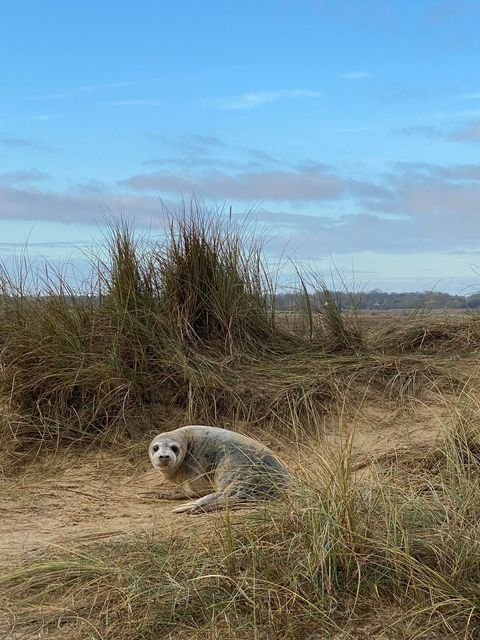
The Annual Moult
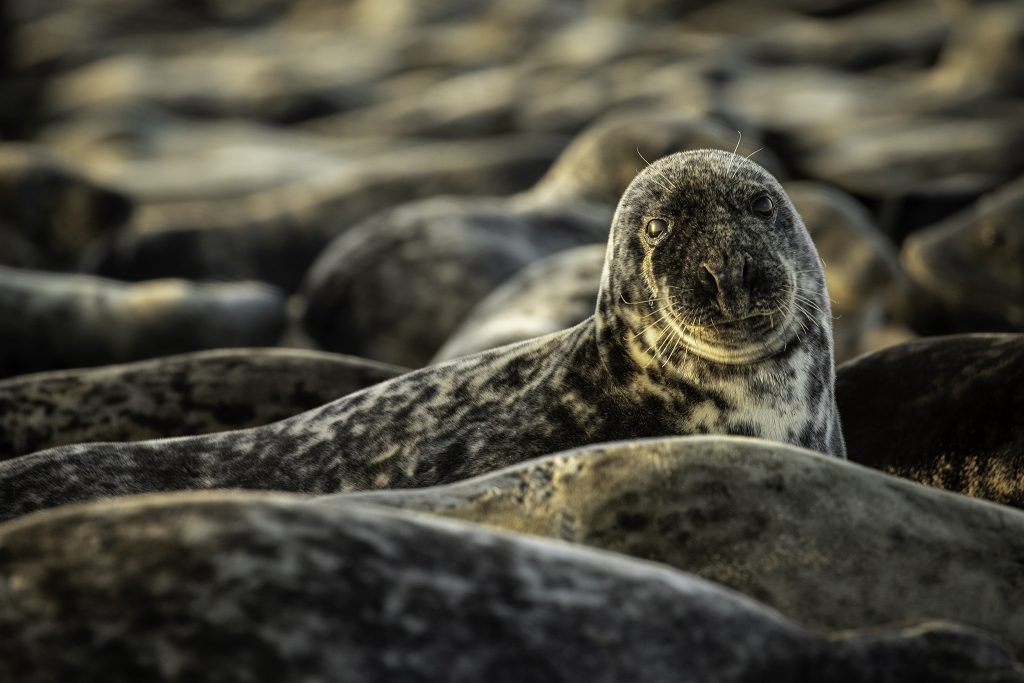
Two or three months after breeding, grey seals start to come ashore again. This time for their annual moult to replace worn-out coats which are no longer fit for purpose.
They haul out along the shoreline to conserve heat, literally thousands of them in close groups, huddled together for safety and unlike the breeding season they are no longer territorial. The moult can take 6-8 weeks to complete. They often can be seen wriggling and scratching to try and shed their dead fur and relieve their itchy skin.
The new fur will not only keep them warm and dry in the water, but also help streamline them when chasing prey. By keeping a safe distance from seals, you allow them to rest peacefully, to conserve their energy and reduce their need for food at this time. Sadly, some humans think it’s OK to repeatedly chase huge numbers of them into the sea. If they are halfway through their moult they risk getting dangerously cold, so please don’t.
Find out more about how and why seals moult every year.
